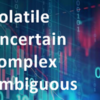IP Strategies in the Digital Transformation: Who owns the Smart City?
Digital transformation is permeating more and more Eco-Systems with a dramatic speed and completeness. But it is not only the permeation – digital transformation is also a booster for meshing the horizontal and vertical integration of complementary Eco-Systems.
For example, the penetration of smart products and services in households more and more expands the underlying Eco-System from Smart Home to Smart Building. In aggregation with neighboring Eco-Systems the „Smart City“ is no longer a concept or a dream of the future – it is the next target system and – according to a patent analysis of Statista – the buildup of arms to dominate this digital goldmine is already ramping up.

But what is the common understanding of a „Smart City“ and why is it so desirable to become a dominant player?
A smart city is a framework, predominantly composed of Information and Communication Technologies (ICT), to develop, deploy, and promote sustainable development practices to address growing urbanization challenges. A big part of this ICT framework is essentially an intelligent network of connected objects and machines that transmit data using wireless technology and the cloud. Cloud-based IoT applications receive, analyze, and manage data in real-time to help municipalities, enterprises, and citizens to make better decisions that improve quality of life.
Citizens interact within Smart City Eco-Systems in a variety of ways using smartphones and mobile devices, as well as connected cars and homes. Communities can improve energy distribution, streamline trash collection, decrease traffic congestion, and even improve air quality with help from the IoT. Last but not least enterprises will launch dozens of new smart applications and services, which will become relevant for the progression of the urbanization trend. The availability of 5G will even accelerate the feasibility, as e.g. data rates, latency and reliability will be dramatically improved with the new standard.
In these dynamic and emerging market conditions no stone will be left unturned. New business models and players will emerge, market shares will be reallocated and inflexible/undigital companies will disappear. In this case Google´s market entrance and the subsequent Google Home platform strategy via an acquisition must not necessarily be a blueprint for the future. For the „Smart City“ EcoSystem, Alphabet emplaces its urban innovation organization „Sidewalk Labs“ via a Public Private Partnership with the city of Toronto developing a prototype of a smart city. For quite a few activists this could be a „Techno-Marshall Plan for smart cities“.
 Apart from the issue who will finally own the smart city, for sure the stakes who will dominate the Eco-System are divided right now. As valuable positions in digitally transforming Eco-Systems can be achieved and sustainably protected via a strategic clever allocated patent portfolio, you can already observe an emerging patent activity. As already seen in other Eco-Systems, e.g. in the Agriculture Business, these activities in digital transforming environments are not focused on hardware objects anymore. The new „digital targets“ in Eco-Systems are the variety of applications, which address customer or „society“ benefits and their underlying use cases.
Apart from the issue who will finally own the smart city, for sure the stakes who will dominate the Eco-System are divided right now. As valuable positions in digitally transforming Eco-Systems can be achieved and sustainably protected via a strategic clever allocated patent portfolio, you can already observe an emerging patent activity. As already seen in other Eco-Systems, e.g. in the Agriculture Business, these activities in digital transforming environments are not focused on hardware objects anymore. The new „digital targets“ in Eco-Systems are the variety of applications, which address customer or „society“ benefits and their underlying use cases.
European best practice how IP-design is used to protect e.g. use cases in several Eco-Systems is documented in the MIPLM Case Study Series.



